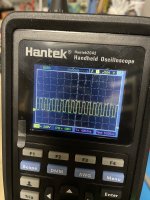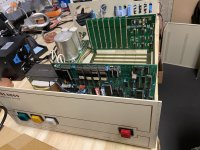Bruce Tomlin
Experienced Member
type in hex, a few minutes in my interactive disassembler, type in a few commentsHow did you disassemble that so fast from a photo !
type in hex, a few minutes in my interactive disassembler, type in a few commentsHow did you disassemble that so fast from a photo !
its the only way the Mostek EPROM's will read anything intelligible with my XGecu T48 (TL866-3G)I would stop using the 5.5V supply to be honest, most old devices of this era are very specific / picky about what constitutes an acceptable supply voltage. If you get the same results using cleaning up + 5.0V supply, continue using 5.0V. It shouldn't be necessary to use more than that in read mode and there is an outside chance of damaging the original devices even with that very small amount of overvoltage - it's not really worth the risk.


That one has even less in it.here is another file saved as a bin, The chip is labeled 9BUG (so might be a monitor program for the 6909 ?) seems way too small though.
0000: 8613 LDA #$13
0002: B7E780 STA $E780
0005: 8615 LDA #$15
0007: B7E780 STA $E780
000A: C639 LDB #$39
000C: 8602 LDA #$02
000E: B5E780 L000E: BITA $E780
0011: 27FB BEQ L000E
0013: F7E781 STB $E781
0016: 20F6 BRA L000E
07FC: F900 FDB $F900
07FE: F800 FDB $F800Sounds reasonable- the origin of these chips : they were supplied with the home brew 6809 system I’m restoring. The system came from a retired Motorola employee who was a chip designer for them from the 70s 80s 90s. The Chicago area Motorola co had an employee computer club that they encouraged to build with free Motorola chips.That bit of code is initialising (probably) an ACIA (or similar) and constantly output an ASCII '9' to the transmitter.
It is (possibly) a bit of test code.
Dave
I don't own a XGecu model T48, But have you tried reading them as 28C16Specific part numbers are :
Intel D2716
MOSTEK MK2716J-8
I have been trying to read with my cheap XGecu model T48 (tried various 2716 chip types and manufacturers - nothing reproducible/verifiable).
The only other rom reading device I have is the XTIDE card.

obligatory disassemblyYes ! the Mostek Chips read fine as Atmel AT28C16 but not as 27C16 !
The intel Chips D2716 will read as 28C16 also
Here is something interesting finally: I think this is the equivalent of SWTBUG or MIKBUG;
